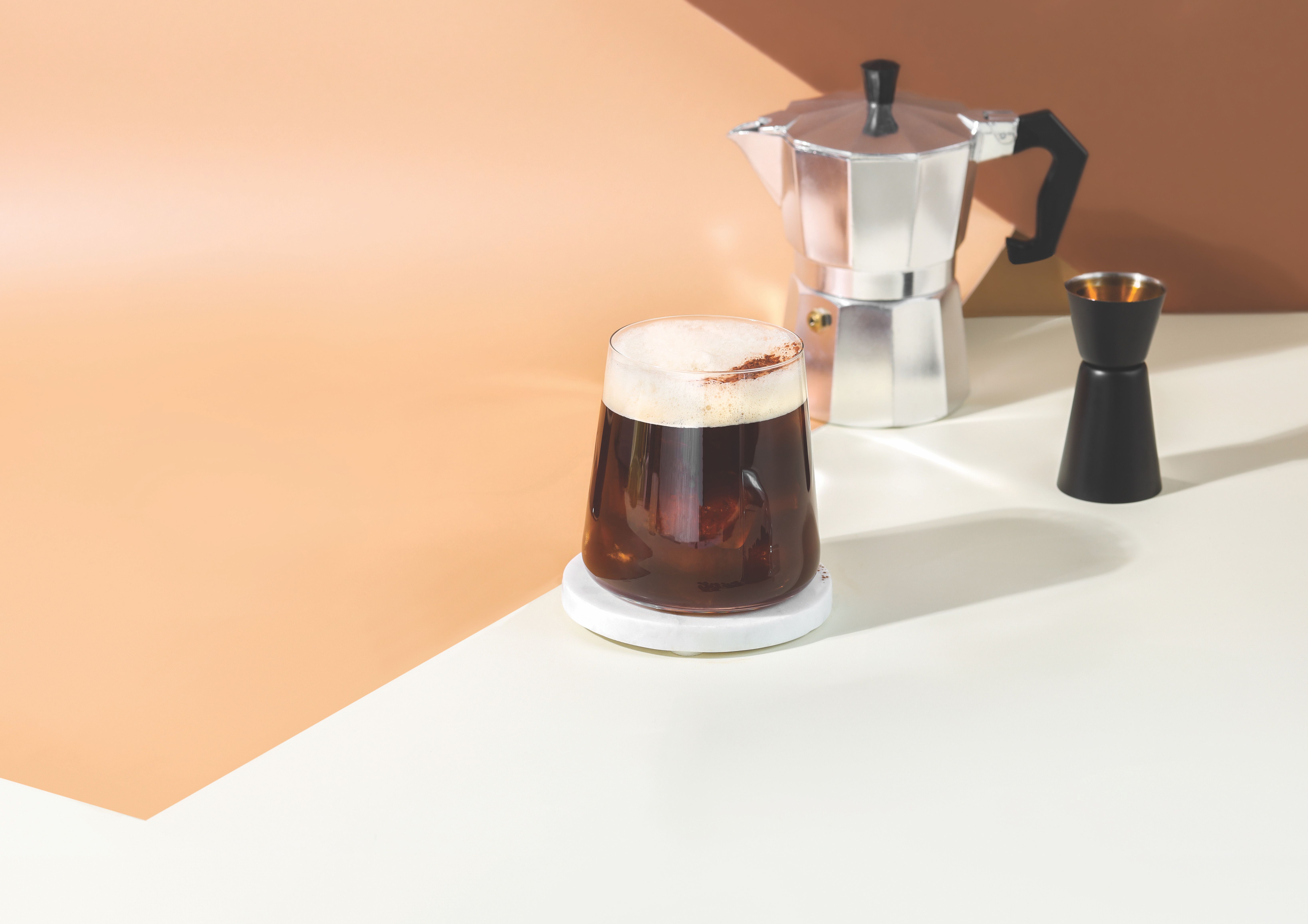
Clinton Cawood continues his journey mapping the origins of historic cocktails and modern classics.
The meeting of coffee and booze is a fi ne and glorious thing, taking various forms over the many years that humans have appreciated both, from Italy’s Caff è Corretto to Dick Bradsell’s enduringly popular Espresso Martini, not to mention the Irish Coffee. In Spain and Mexico, it’s all about the Carajillo, a serve with a long history and serious following in modern times. Equal parts postprandial and party drink, this combination of espresso with Spain’s Licor 43 has become ubiquitous in Mexico City in recent years.
The Carajillo’s exact origins have been lost in time, but it likely has links to Cuba during Spanish rule, taking inspiration from the Catalan coffee-and-rum drink Cremat, and adapting the Spanish word for courage, coraje, for its name, because nothing dispels fear like caff eine and cane spirits. Or was it the overworked transport workers of early 19th-century Barcelona, quite rightly in need of both espresso and a shot, but as quickly as possible? They would, the story goes, order the two mixed together and then rush off to work, proclaiming “que ara guillo” or, roughly, “I’m outta here!”.
Whatever the origins of the drink, and its name, the Carajillo was made with a variety of spirits over the years, until Spain’s Zamora family began producing Licor 43 in 1946. It quickly became the standard for the drink, and understandably so, with the liqueur’s array of secret ingredients combining harmoniously with the espresso. The Carajillo can be served layered, known as puesto, in which the coff ee is carefully added to a glass containing ice and Licor 43, or in more contemporary shakeado form, with equal parts espresso and liqueur shaken and strained over ice. There’s plenty of room for interpretation too, of course, with some using fi lter or cold brew instead of espresso, and others experimenting with different spirits and liqueurs.


